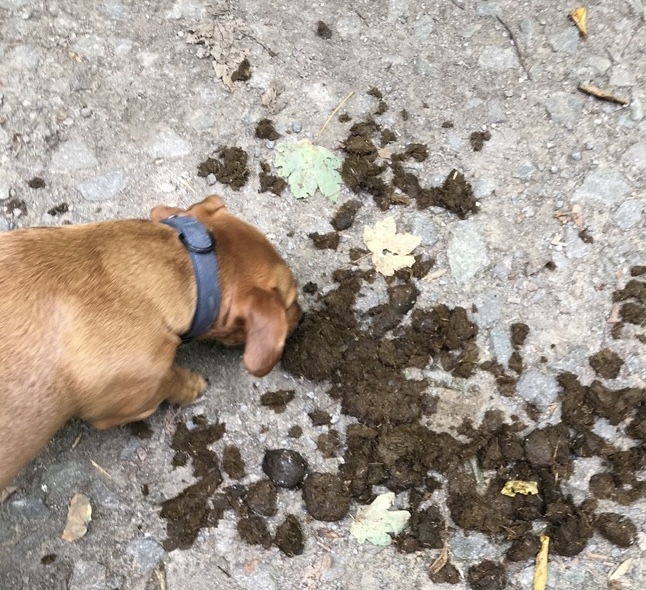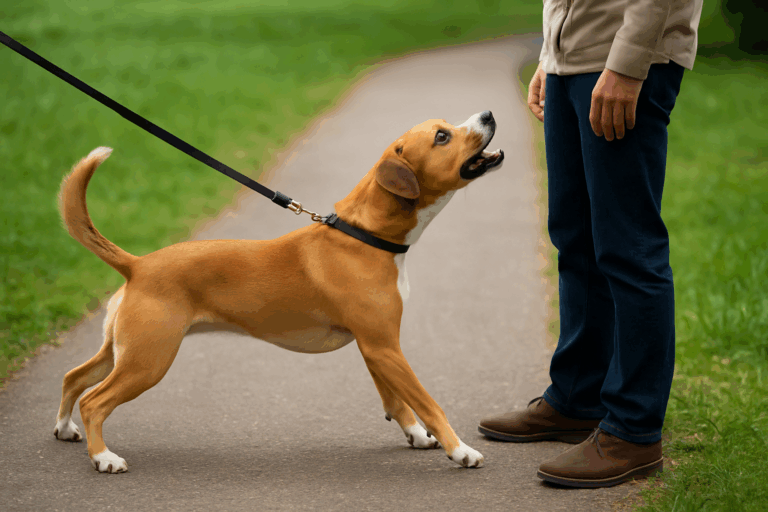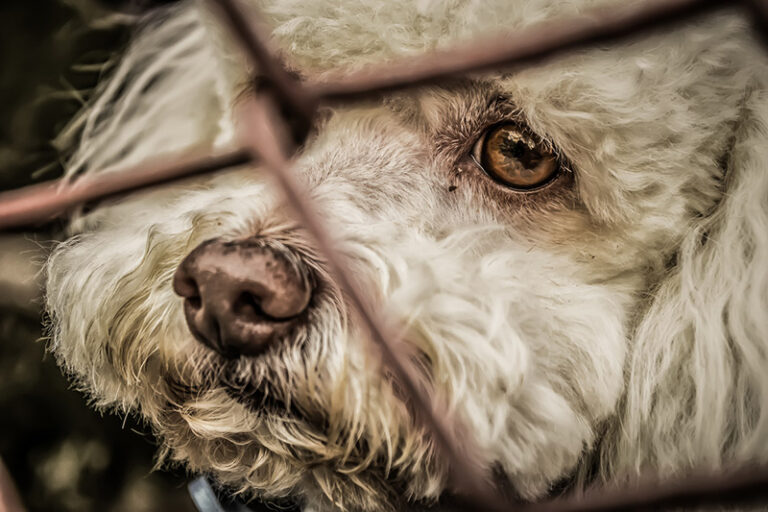Yep dogs eat poo and it is pretty … yuk, I admit! Nevertheless, there are numerous reasons for that and ways to learn to stop this odd behavior. Coprophagia, or the ingestion of feces, is a canine behavior that often intrigues and disgusts dog owners. While this behavior may seem aberrant to humans, it is relatively common in dogs and can be attributed to various causes. This article explores the origins, implications, and approaches to addressing coprophagia in dogs, drawing on scientific research to shed light on the subject.
What is Coprophagia?
Coprophagia is defined as the act of consuming feces. In dogs, this can include their own feces, those of other dogs, or even those of other animals. This behavior is more frequent in puppies but can persist into adulthood. Although unpleasant, this behavior is not rare: studies show that up to 16% of dogs are regular coprophages.
Causes of Coprophagia
1. Innate and Evolutionary Behavior
Some theories suggest that coprophagia could be a residual behavior from evolution. The wild ancestors of dogs, such as wolves, consumed feces for various reasons, including keeping their den clean and avoiding predators attracted by the smell of excrement.
2. Nutritional Deficiencies
One commonly cited cause is a nutritional deficiency. Dogs may ingest feces in response to an imbalanced diet or a lack of certain essential nutrients. However, this theory is controversial, as many well-nourished dogs also exhibit coprophagic behaviors.
3. Digestive Issues and Diseases
Digestive disorders or diseases can also lead to coprophagia. For example, conditions such as exocrine pancreatic insufficiency, which affects digestion, can drive a dog to consume feces to obtain missing digestive enzymes.
4. Learned Behavior
Puppies may imitate coprophagia by observing other dogs. Additionally, dogs can learn this behavior if they receive attention after consuming feces, even if the attention is negative.
5. Environment and Hygiene
Living conditions also play a role. Dogs living in dirty or overcrowded environments may be more prone to this behavior. A lack of mental and physical stimulation can also lead to coprophagia as a form of boredom or attention-seeking.
Implications of Coprophagia
Although generally harmless, this behavior can sometimes have health consequences. Feces can contain intestinal parasites, pathogenic bacteria, and other infectious agents that can be harmful to the dog. Additionally, this behavior can be socially problematic, especially in interactions with humans and other animals.
Approaches to Addressing Coprophagia
1. Improving Diet
Ensuring a balanced, high-quality diet can help reduce coprophagia. Some veterinarians recommend dietary supplements containing digestive enzymes or probiotics to improve digestion and reduce the urge to consume feces.
2. Behavior Management
Positive reinforcement is crucial. Rewarding appropriate behaviors and ignoring undesirable behaviors can help modify the dog’s habits. Using basic commands such as “leave it” or “no” when the dog attempts to consume feces can also be effective.
3. Environmental Enrichment
Providing adequate mental and physical stimulation is essential. Interactive toys, food puzzles, and regular exercise can help reduce boredom and compulsive behaviors, including coprophagia.
4. Cleanliness and Supervision
Maintaining a clean environment and supervising the dog when outdoors can reduce opportunities to consume feces. Promptly picking up excrement and preventing access to areas where other animals defecate is recommended.
5. Medical Interventions
In some cases, medications may be prescribed to treat underlying conditions that could contribute to coprophagia. Consulting a veterinarian is crucial for diagnosing and treating any medical issues.
Conclusion
Coprophagia is a complex, multifactorial behavior in dogs. Understanding its origins and causes can help owners adopt effective strategies to manage it. Although often unpleasant, this behavior is generally harmless and can be addressed with patience, understanding, and appropriate interventions.
Sources
- Becvarova, I., & Weese, J. S. (2019). Nutritional and Health Considerations in Dogs Exhibiting Coprophagy. Journal of Veterinary Behavior, 28, 64-71.
- Boze, B. G., & Voris, C. (2018). Factors Associated with Coprophagia in Dogs. Applied Animal Behaviour Science, 205, 120-126.
- Hart, B. L., & Hart, L. A. (2019). The Paradox of Dog Coprophagy. Veterinary Medicine: Research and Reports, 10, 15-20.
- Case, L. P. (2014). The Role of Nutrition in Canine Coprophagia. Journal of Small Animal Practice, 55(10), 487-491.
- Pavletic, M. M., & Junior, S. G. (2020). Digestive Disorders and Coprophagia in Dogs. Veterinary Clinics: Small Animal Practice, 50(1), 25-34.
- Wells, D. L. (2018). Social Learning and Canine Coprophagia. Animal Cognition, 21(5), 629-638.
- Overall, K. L. (2013). Environmental and Behavioral Influences on Canine Coprophagia. Journal of Veterinary Behavior, 8(3), 181-187.
- Sykes, J. E. (2021). Parasitic Infections and the Risk of Coprophagia in Dogs. Veterinary Parasitology, 294, 109438.
- Freeman, L. M. (2016). The Impact of Diet on Canine Behavior. Journal of Veterinary Internal Medicine, 30(2), 755-764.
- Herron, M. E., & Buffington, C. A. (2014). Coprophagia and Behavioral Management in Dogs. Veterinary Clinics of North America: Small Animal Practice, 44(3), 459-471.
- Hiby, E. F., & Rooney, N. J. (2020). Enrichment Strategies for Reducing Coprophagia. Animals, 10(11), 2094.
- Horwitz, D. F., & Mills, D. S. (2012). Environmental Management for Coprophagia in Dogs. Veterinary Behavior, 4(2), 83-89.
- Gruen, M. E., & Sherman, B. L. (2015). Medical Treatment of Coprophagia. Journal of the American Animal Hospital Association, 51(6), 364-370.



